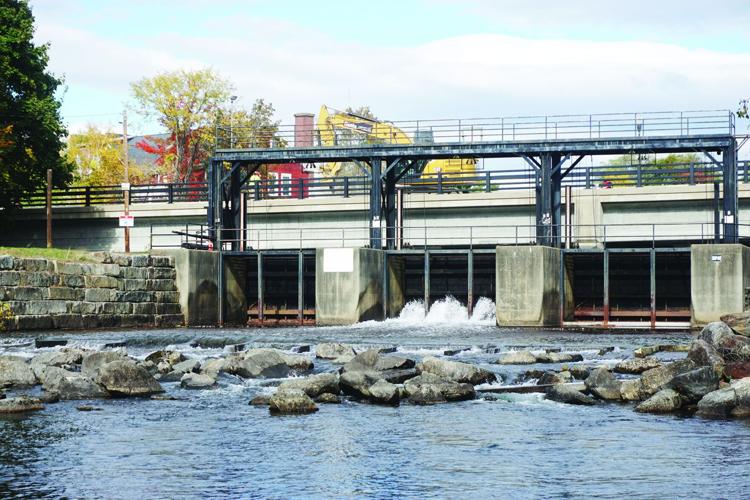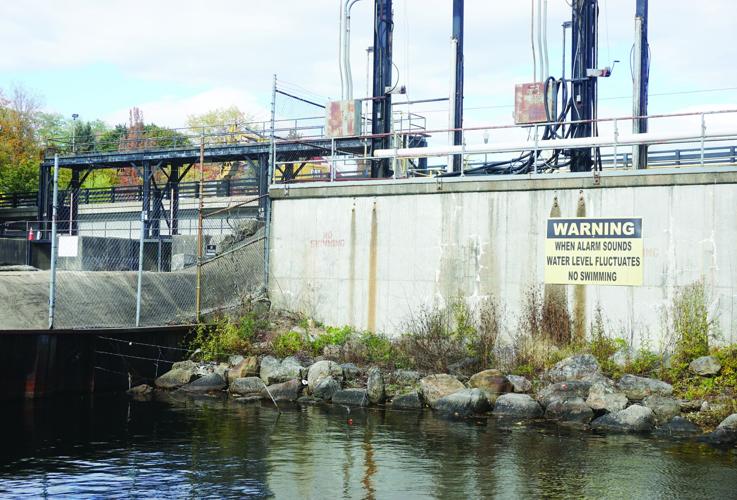Drawdowns for lakes and ponds around New Hampshire take place each year, and for several lakes in this area, that process has already begun.
The state Department of Environmental Services Dam Bureau lowers water levels of lakes and ponds controlled by their dams each fall. Drawdowns reduce winter ice damage to shoreline properties, give homeowners a chance to make repairs to waterfront properties, and reduce the potential for spring flooding.
“It is flood protection to some extent,” NHDES Chief Operations and Maintenance Engineer Dan Mattaini said.
Some of the larger lakes in the region, aside from Winnipesaukee, have already started their drawdowns. Newfound Lake has a drawdown from the Newfound River in Bristol starting on Oct. 13. The drawdown is listed as 2.5 feet from full. Squam Lake was also scheduled for an Oct. 13 drawdown from the Squam River dam in Ashland, with a level of 2.5 feet from full also listed.
Lake Kanasatka in Moultonborough has a drawdown of 1.5 feet below full scheduled for Nov. 3.
Laconia's Opechee and Winnisquam are not on the schedule this year, as they were drawn down last year.
While the Big Lake is not necessarily drawn down, the current drought conditions are affecting tactics used by DES staff, as the lake level is historically low.
According to Mattaini, Winnipesaukee’s level is near a record low, with data showing it to be 502.21 feet. This is well below the full lake level of 504.32 feet.
“As you can see, we are quite a bit below average,” Mattaini said.
Information provided by DES staff states Winnipesaukee is not purposely drawn down. However, after Columbus Day there are releases from Lakeport Dam which are reduced from the normal amount of 250 cubic feet per second, to between 30 cfs and 50 cfs. Mattaini said this occurs for up to two weeks so maintenance can be done on the dams and hydropower facilities along the Winnipesaukee River.
“The flow of 30 to 50 cfs is the minimum flow needed to maintain the downstream aquatic life during this period,” a report by DES staff states. “This year the reduction will begin on Oct. 18.”
Mattaini explained DES staff notifies dam operators about this flow reduction, and the dates of when water will be released. If at some point the flow is increased, DES staff will notify dam operators so they can adjust.
The report states that by the middle of the fall, Winnipesaukee is usually 15 inches below springtime full. This is due to evaporation and releases from the lake which take place in the summer months. However, the drought has caused the lake to already be at that level.
“When the amount of water released from the dam is reduced after Columbus Day, the lake level is not expected to drop significantly for the remainder of the month of October and, if drought conditions ease in the fall and winter, it is expected to remain relatively stable through the month of December absent any major rainfall events,” the DES report states. “Depending on the amount of snow on the ground in the winter, the lake level may be lowered further beginning in January to a depth of 2 feet below the normal full level.”
Mattaini said the lake level is currently where it would be in March, as the level drops throughout the winter.
“This is unusual, due to the drought,” Mattaini said.
Mattaini said for lakes other than Winnipesaukee, DES staff try to reach the full level for June 1. DES leaders expect it to fall off throughout the summer, but this year was especially dry.
He said the drawdown is done for the larger lakes, which generally drop off due to the required releases and evaporation that occurs throughout the summer. Mattaini said it is prudent to provide dilution of the water supply, and a certain amount of water volume is needed to be released to ensure this.
The larger lakes are done every year, he said, and the drop off is gradual due to releases and evaporation. Some lakes must follow certain elevations for certain dates throughout the summer, but right around Columbus Day, if it is not down as much as expected, the drawdown is accelerated.
“The whole point is to make sure the water is down so in the spring, there is storage available for the runoff,” Mattaini said.
Mattaini said the lakes referenced are already down to the winter levels, so there is no reason to push it any further. He said DES staff are being careful, so people have time to get their boats out of the water, and ensure there is enough water in the lakes throughout the winter.
For a complete list of the drawdowns, visit des.nh.gov/water/dam-maintenance-and-management/fall-lake-drawdown.



















(0) comments
Welcome to the discussion.
Log In
Keep it Clean. Please avoid obscene, vulgar, lewd, racist or sexually-oriented language.
PLEASE TURN OFF YOUR CAPS LOCK.
Don't Threaten. Threats of harming another person will not be tolerated.
Be Truthful. Don't knowingly lie about anyone or anything.
Be Nice. No racism, sexism or any sort of -ism that is degrading to another person.
Be Proactive. Use the 'Report' link on each comment to let us know of abusive posts.
Share with Us. We'd love to hear eyewitness accounts, the history behind an article.